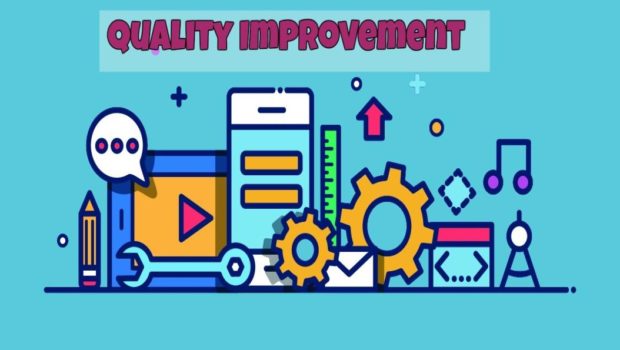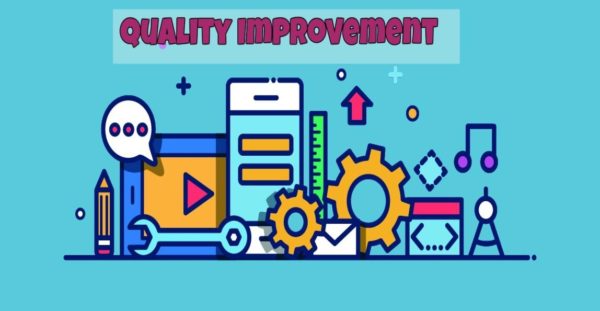10 Unique Principles of an Awesome QA
Quality Assurance is considered as an organized and planned set of activities which are done to guarantee that the delivered product is of good quality and it also affirms to the set of standards, procedures and requirements. This isn’t a one phase procedure; however, a standard activity which should be taken during the whole SDLC (Software Development Life Cycle).
Relatively, every organization takes into account this practice and assures that the product provided by it has been delivered in consistence with the pre-determined standards and requirements. Assuring the best product quality is one of the easiest, yet the best approach for retaining the customers for a long period. Ensure that the manufactured product is being used by the targeted audience.
Therefore, Quality Assurance is a wide term and the complete procedure spans the whole life cycle of the software development. Here are some of the principles for an awesome QA:
1. Apply Effective Practices
With a compelling QA testing practice, the cost of SDLC can be decreased. This is because QA testing necessitates that the software complies with the pre-determined standards and requirements; which is a major stipulation in the advancement of the life critical products.
2. Focus on Quality Improvement
The QA testing should emphasize on enhancing the procedure of software development so as to enhance the quality of products. The objective of QA procedure is to offer confirmation to climb senior management and different stakeholders so that the activities and processes through the software development are intended to maintain a good quality of the final product.
3. Assure a Suitable Practice for the Development of Software
How you can accomplish quality likewise relies upon what strategy you utilize for the software development. For instance, in scrum you might test the majority of your iteration later, they are complete assuring that every piece of software is separately tested and after that combined together when the whole product is finished relying upon how small your iterations are.
4. Black Box Testing or White Box Testing
In QA, you can basically check if the functionality works as according to the planning, known as black box testing or either you can thoroughly review the software code, known as white box testing.
White box testing tests the inner arrangements and workings on a program instead to black box testing where the software is dealt with as a black box observing chastely the software functionality with no regard to the internal implementation. Also, there is a grey box testing, which a combination of two types of where the software testers have adequate knowledge of inner data arrangements and design tests which are based upon those algorithms; however, implement those tests at the black box or user level.
5. Constant Monitoring
The constant monitoring assures that the setup standards and processes are followed all along the process of development.
6. Include Risk Management with the Quality Affirmation
Risk management and in addition different activities and processes must be considered as a part of guaranteeing the product quality. It is one of the building squares of sufficient quality assurance.
7. Minimize the Cost of Maintenance
The software maintenance cost is likewise decreased because the software necessitates less change later on with satisfactory QA. Obviously, the correction and changes of mistakes which are found simply after the software release and execution might be expensive and may have a great impact on the reputation of your organization. So, it is essential that the QA processes should recognize errors at an early stage before the software gets discharged, hence resulting in the complete reduction of the whole cost of life cycle.
8. Briefly Formulate the Requirements
Good quality assurance begins with requirements, the manner in which requirements are prioritized, managed, phrased and captured.
[ Related Read: Efficient ideas to explore the types of requirements for testing ]
This implies that assuring requirements are formulated in easy to understand and concise way is important and this helps the developers too because they are able to understand what is expected from them and greater functionality is required as the lifecycles moves on.
9. Make Use of Mature Processes
It is imperative to characterize the correct procedures to be used in the product development and assure that those procedures are used as planned without any deviations from those fixed procedures.
10. Consider End Client’s Attitude
Testing is one of the key purposes of quality assurance so while good development practices and unit tests assure that you are fabricating your product in an accurate manner; QA and testing additionally will try to ensure that what you are really constructing is likewise right. This implies that the mindset of the tester concentrates more on the end client.
Ending Note
The excellent QA strategy comprises of all the above procedures. The main aim is to develop overall software quality and the tester must assure to comply with all the fundamental principles.
Author Bio:
Minkle Kalra is a Digital Marketer associated with BugRaptors. A CMMi5 certified company with extensive experience as a third party testing vendor in US. She is passionate toward writing articles or content on technological trends and any kind of testing. As She is young energetic and likes to share her knowledge, for the readers who are interested in exploring testing and technology fact’s and trends.




















